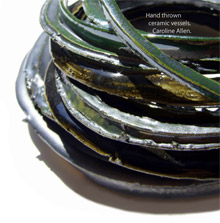Karina Grömer (Natural History Museum Vienna)
Colour, pattern and glamour are not usually terms associated with textiles in Bronze Age Europe. Such textiles are usually assumed to be merely functional – textile technology was not so developed and woven fabrics are thought to have been coarse and in dull natural shades. Although this is true for the main corpus of Bronze Age textiles in Europe, the project CinBA offered a glimpse of an alternative picture. In the Bronze Age we can discern the beginnings of a creative interplay with the possibilities of the materials – patterns, surfaces, colours and their combination with metal. Recently analyzed finds from the Bronze Age mines at Hallstatt (1500-1200 BC) give first examples for advanced weaving techniques, spin pattern and dyeing.
Textile patterns are rare, but in the case of the Irgenhausen find very elaborate and mirroring the pattern from contemporary clay figurines in Eastern Europe. Gold threads from Austrian and Hungarian find-spots bring some glamour into the woven world. A creative process can be detected in Bronze Age Europe, to give the textiles an attractive appearance as with as other materials and objects like jewellery. This will be discussed with reference to the work of Peter Wells (2008) and his analysis of the visual qualities of objects.
References
Wells, P.S. 2008. Image and Response in Early Europe. London: Duckworth.


